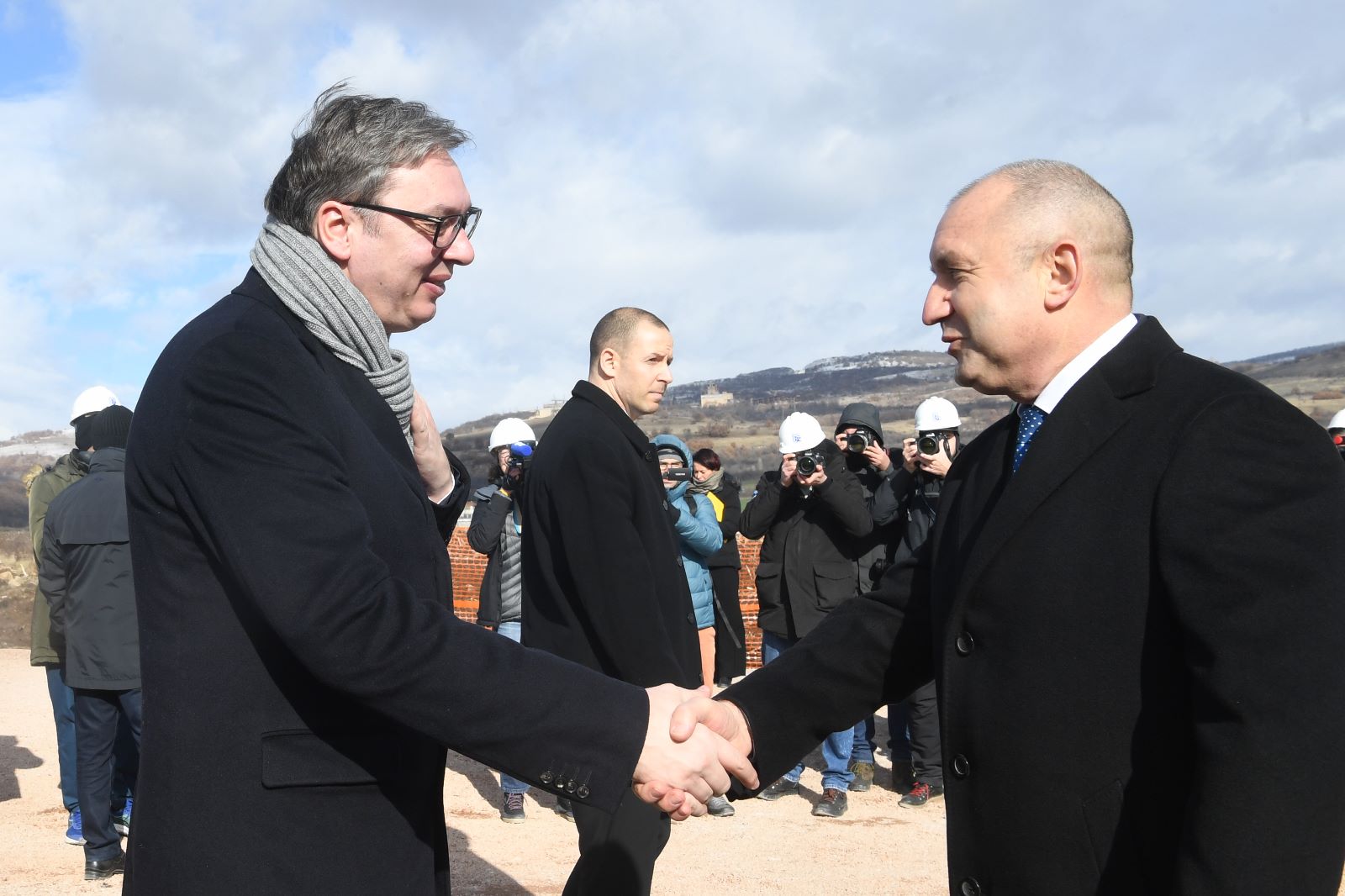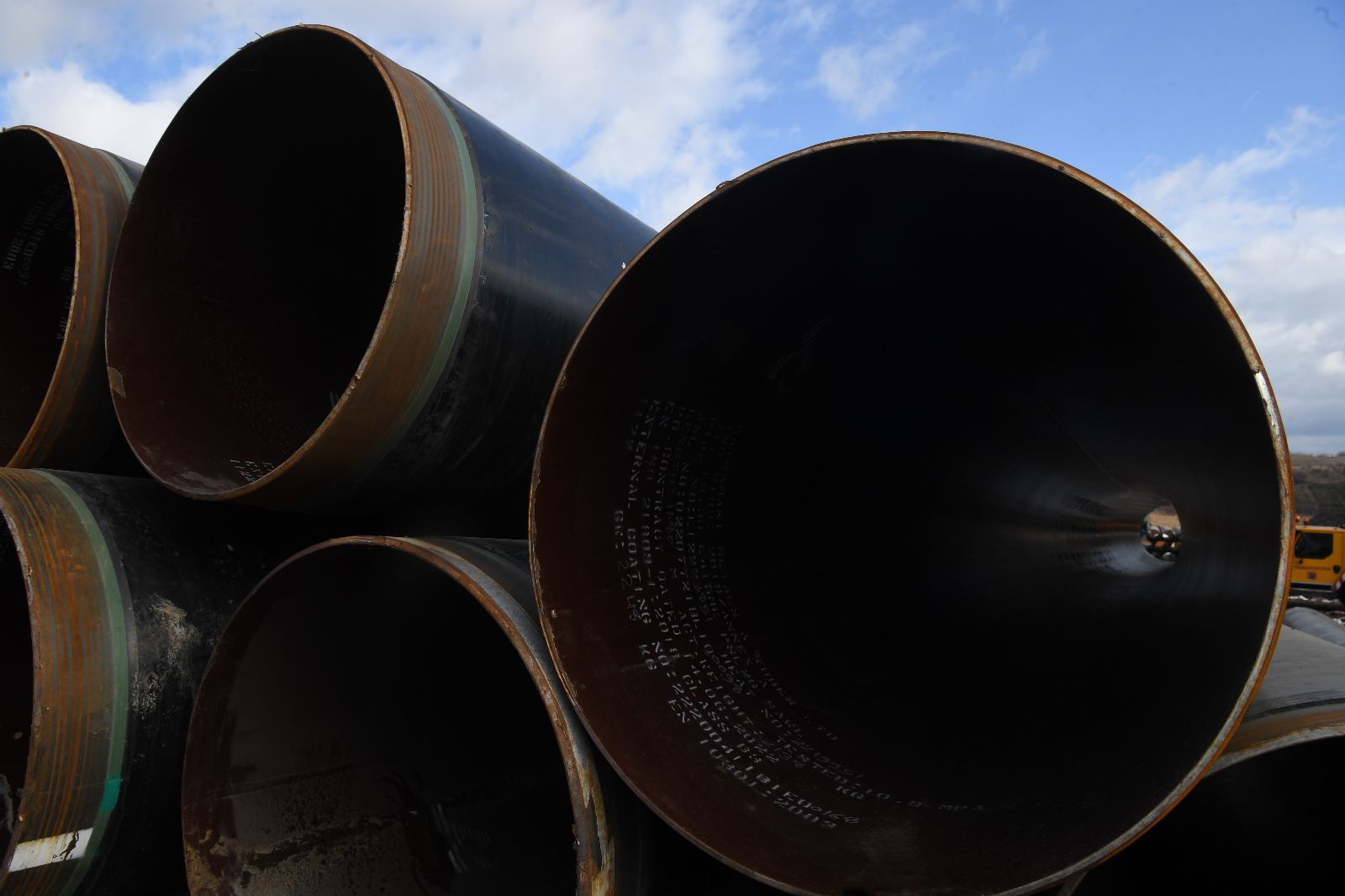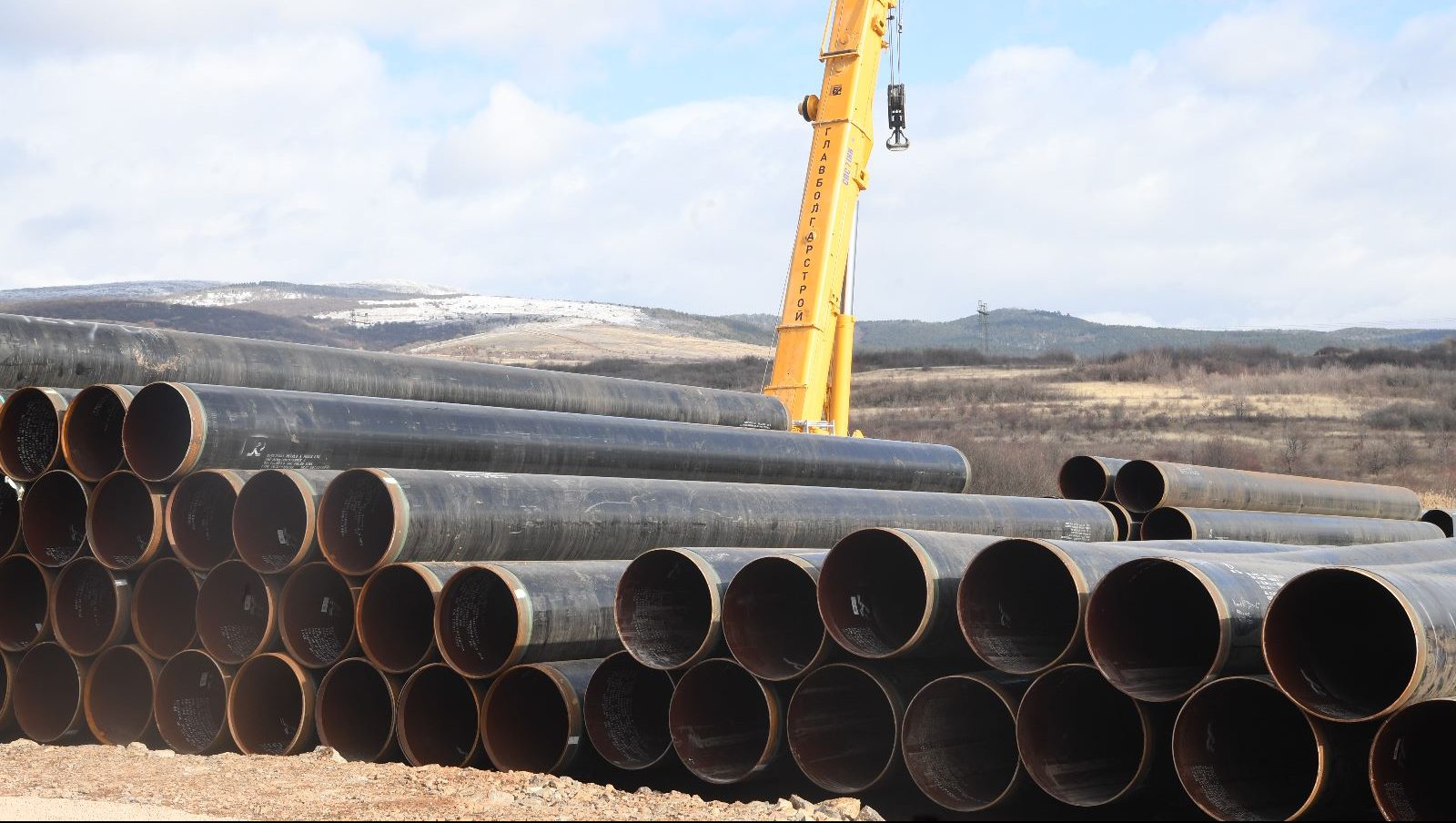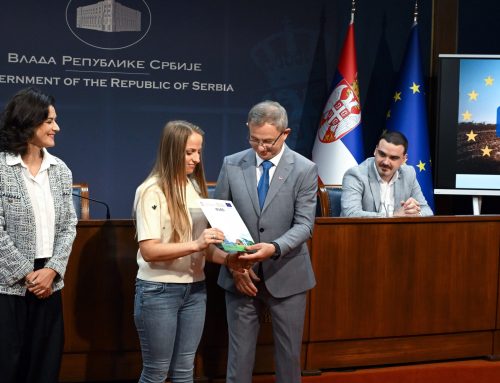BULGARTRANSGAZ company held a high-level event in Sofia today to celebrate the milestone of launching the construction works of the “Gas Interconnection Bulgaria-Serbia” (IBS). The President of Bulgaria Rumen Radev and the President of Serbia Aleksandar Vučić, together with the Ministers of Energy of both countries and the Ambassador of the European Union to Serbia, Emanuele Giaufret and EU representatives from Brussels attended the event and participated in a walk along the route of the interconnection.
The new gas interconnector will connect the existing Serbian network in Niš with the Bulgarian network in the capital Sofia, stretching for 109 km on the Serbian side. With the pipe diameter of 700 mm and maximum pressure of 55 bar, its capacity will allow for the transfer of 1.8 billion cubic metres of natural gas annually, equivalent to 60% of Serbia’s total annual consumption. The part of the project on Serbian territory is being financed partly through EU grants, in the amount of 49.6 million euros, as well as 25 million euros of a favourable loan from the European Investment Bank.

While the works on the Serbian territory on the interconnector started already in January 2022 the works on the Bulgarian were launched now today.
The Bulgarian part IBS is a Project of Common Interest (PCI) that has been co-funded by the EU under the Connecting Europe Facility Energy programme with EUR 27.6 million. The EU support will contribute to the construction of the total length of the gas interconnector on Bulgarian territory (62 km), from the town of Novi Iskar to the Bulgarian-Serbian border. Besides the gas pipeline network, other technological facilities will be built, such as pigging facilities, valve assemblies, two automated gas-regulating stations (at Slivnitsa and Dragoman) as well as a gas metering station at Kalotina. Following its construction, the gas interconnection will have an estimated throughput capacity of 1.8 bcm/y with a reverse flow capability. The IBS is therefore a project with strategic importance in increasing the security and diversification of gas supplies and routes, as well as the interconnectivity of the gas transmission systems of both the Republic of Bulgaria and the Republic of Serbia.

The Ambassador of the European Union to Serbia, Emanuele Giaufret, stated:
“Today we make another big step in providing : energy diversification, energy security and a cleaner environment. Today’s launch on the Bulgarian side of the construction of the gas interconnector to be completed by October of this year will also significantly increase the amount of gas supply to industry and households in Serbia. Serbia will have a greater choice as it will be less dependent on its current sources by having an additional source. Transitions and modernisation need investments. This is another EU investment providing for both in Serbia.”
Beatrice Coda, Head of Unit at the European Climate, Infrastructure and Environment Executive Agency, stated during her speech at the event that “The project is of particular importance, not only for Bulgaria and Serbia, but also for the region and the EU, being part of a significant and comprehensive regional infrastructure, whose capacity and technical capabilities are essential to achieve a well-functioning, efficient and interconnected regional gas market”.

The IBS aims to be completed and operational by December 2023.
Besides Niš, the pipeline will also include 3 other gas metering and regulation stations in Bela Palanka, Pirot and Dimitrovgrad, allowing thus for these three cities and regions of Serbia – their citizens, schools, hospitals, businesses, to have access to gas supply, for heating and industrial production.
Due to a considerably smaller environmental impact and greater flexibility in terms of power production, natural gas comes in as optional transitional fossil fuel towards fully renewable sources. Transition to natural gas would also allow towns and municipalities in Serbia with developed district heating systems to construct high-efficiency, small-scale combined heating and power generating systems.




